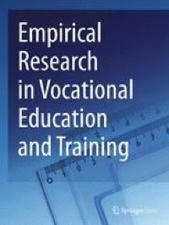 Your new post is loading...
 Your new post is loading...
Continuing, professional, and workforce education units play a pivotal role in assisting colleges and universities navigating the complexities of today's higher education landscape. This includes meeting the growing needs of adult learners, whose significance and requirements are continually evolving, as well as augmenting revenue streams.
A few highlights:
Some Good News
Exponential Surge
45% of respondents agree their unit has appropriate staffing required to execute their goals, nearly double from 23% in 2023.
81% agree that they have support and buy-in from senior academic leadership to scale and expand. Room For Improvement Access to Data 48% do not know enrollment numbers for their online and professional education units.
29% agree it is easy to access real-time enrollment data. Bridging the Gap
54% believe their unit is the most academically innovative at the institution, yet 61% disagree that their unit is seen as academically equal.
KEY INSIGHT #1
When individuals receive training and opportunities to develop their skills, they tend to find greater satisfaction and meaning in their work. Likewise, companies do a better job at attracting and keeping talented employers when they offer opportunities for training and skills development.
KEY INSIGHT #2
To improve the quality of work for front-line employees across industries and sectors, more efforts are needed to build the soft skills of supervisors and managers.
KEY INSIGHT #3
Remote work has contributed to improvements in quality of work, but the benefit is disproportionately with higher-income knowledge workers.
KEY INSIGHT #4
Sustainable gains in work quality can only be achieved by addressing workplace discrimination.
This fact sheet provides metrics on how young Canadians move from largely compulsory secondary education, into and through their postsecondary experiences and finally onto the labour market. It brings together the latest indicators that can provide insight into these pathways.
KEY INSIGHT #1
Supporting employers in overcoming structural barriers to training investment is key to addressing labour and skill shortages.
KEY INSIGHT #2
Ensuring that employers are actively engaged throughout the lifecycle of skills delivery projects, from inception to roll-out to evaluation, is central to the success of any training endeavor.
KEY INSIGHT #3
Well-resourced and trusted intermediary organizations that coordinate efforts among stakeholders can help alleviate employer capacity constraints, especially for SMEs, and improve program design.
ChatGPT took the world by surprise last year, almost as if we had discovered another form of life. Since then, artificial intelligence (AI) has been evolving unchecked, to the point where some are even talking about a “technological Wild West”.
The opportunities presented by artificial intelligence are as daunting as its dangers.
But how should artificial intelligence be regulated? Who should do it? How can we ensure that the companies and individuals who develop and use AI respect ethical principles? Should we legislate now for a technology that we still understand so little about? Is it even possible to do? Does Bill C-27, tabled by the federal government, address these crucial issues? And what role should Quebec and the other provinces play?
These are just some of the questions posed by the series “How to legislate on artificial intelligence”, which presents five texts exploring these and other issues, taking stock of the current situation and suggesting avenues for consideration by governments, industry and the public debate in general.
The authors are seasoned experts, many of whom sit on global committees on AI, including ethicists Jocelyn Maclure and Alexis Morin-Martel, professors Céline Castets-Renard and Anne-Sophie Hulin, University of Ottawa vice-dean Jennifer Quaid, and constitutionalist and former minister Benoît Pelletier.
The COVID-19 pandemic severely disrupted the workplace. Some businesses closed either temporarily or permanently. Others enabled their employees to work from home. Those that could not shift to remote work had to implement new safety procedures to
prevent their employees from getting sick. Along the way, access to skills training was interrupted. In cases where training did continue, its focus often shifted to managing the changes in the workplace caused by the pandemic.
The latest wave of the Survey on Employment and Skills, conducted in March 2023, revisits the issue of access to skills training. Three years after the onset of the pandemic, it finds that more workers are participating in work-related training to improve their skills, while training is becoming less focused on the management of the pandemic. It also shows that the most common type of training is that which focuses on workplace health and safety. The survey finds that working from home does not appear to have posed a barrier to skills training to date, as those who have switched to working from home are more likely than those who continue to work in their regular workplace to access training to improve their skills.
Bold idea: As digital skills continue to evolve at a rapid pace, workforce planners, policymakers and employers must ensure the workforce is equipped to meet current and future labour market demands.
Background
For vocational and professional education to remain relevant, instructors need to keep developing themselves and their practices. Much of instructor learning happens on-the-job. Drawing on literature on teacher learning in the workplace, this article explores how structural and cultural conditions shape professional learning of instructors in departments for post-secondary vocational and professional education in western Canada.
Methods
A multiple case study approach was used to explore how instructors perceive departmental conditions as enhancing or inhibiting professional learning. Interview data, meeting observations, and program documentation was collected from 27 instructors from 5 departments in three institutes for post-secondary vocational and professional education. The educational programming in the five departments cover four industry sectors: two healthcare departments, one building trades, one business, and one social services department.
Results
Structural conditions reported to facilitate instructor professional learning at the department level include student feedback, job-rotation, coordinating work-placements, and whether participation in continuing professional development is a licensing requirement of the profession. Heavy workload and the way teaching is scheduled are most often reported as conditions inhibiting learning. Considering cultural conditions, three in-depth case descriptions illustrate how instructors draw on beliefs and practices prevalent in their original trade/profession when shaping their departmental culture as a learning environment.
Conclusions
The concept of sense-making proved useful to describe how instructors draw on elements of the occupational culture taught in the program when shaping their workplace as a learning environment. This influence of occupational culture could help explain previously observed differences in how instructors from various industry sectors engage in professional learning. Organizational support is warranted for facilitating organizational conditions for instructor learning including the development of departmental leaders’ capacity to influence workplace conditions for professional learning.
This public opinion research helped build understanding of key needs and expectations among workers emerging as a result of the experience of working through the pandemic.
The research explored the extent of economic and job quality inequities between those who had access to remote work options during the pandemic and those who did not, as well as the widening disparity in job satisfaction between the two groups. Those who worked remotely were more likely to report better physical, psychological and financial health than non-remote workers.
Survey responses revealed dissatisfaction among many remote workers about the lack of consultation with them about return-to-work planning by employers.
The project also notes that a small but sizeable number of workers who did not work remotely are considering switching careers through a training or education pathway.
Since remote work is here to stay, and increasingly workers are seeking remote or hybrid work, policy discussions are needed to outline best practices for employees and workers.
A new CERIC-funded report from Creative Futures Studio Inc. sheds light on 10 megatrends that will shape the future of work in Canada. The report, Career Development in 2040, digs into the trends that workers, employers – as well as those who advise them – need to understand to thrive in a labour market facing massive disruption. Based on an extensive literature review of as well as interviews with career development professionals (CDPs) and career services users, the report highlights 10 major trends:
Work Anywhere
AI & Automation
Living with Climate Change
Geopolitical Conflicts
Reconciling the Impacts of Colonialism
Economic Precarity
Globalization Under Pressure
Education, Disrupted
Declining Mental Health & Well-being
Generational Shifts
The report also identifies microtrends within each area (32 in total), including the impact of the “green skills revolution” on new jobs creation, greater recognition of the skills of neurodivergent individuals, the increasing popularity of the “learn and earn” model of post-secondary education and how Gen Z’s values-driven approach to work will inform their leadership.
Employers have scaled back on-the-job training. Bootcamps and quick courses at universities and colleges are trying to bridge the gap
This public opinion research helped build understanding of key needs and expectations among workers emerging as a result of the experience of working through the pandemic.
The research explored the extent of economic and job quality inequities between those who had access to remote work options during the pandemic and those who did not, as well as the widening disparity in job satisfaction between the two groups. Those who worked remotely were more likely to report better physical, psychological and financial health than non-remote workers.
Survey responses revealed dissatisfaction among many remote workers about the lack of consultation with them about return-to-work planning by employers.
The project also notes that a small but sizeable number of workers who did not work remotely are considering switching careers through a training or education pathway.
Since remote work is here to stay, and increasingly workers are seeking remote or hybrid work, policy discussions are needed to outline best practices for employees and workers.
Microcredentials represent a fairly new avenue for training and certification within the spheres of higher and continuing education. They are frequently promoted by governments and educational institutions as a tool for workers transitioning between sectors or occupations as they can highlight how a person’s skills can be applied to emerging and growing sectors. An increasing number of institutions are offering microcredentials to workers looking to transition into different sectors. For example, in Alberta they are available to those transitioning out of the oil and gas sector.
Yet, it’s uncertain the extent to which microcredentials are recognized and valued by employers and workers, and how attitudes about their value may differ across industries. There is an opportunity to evaluate how they are understood and used in the labour market and if they are fulfilling their initial promises.
This study evaluates emerging evidence on microcredentials and examines how employers and learners assess their value as a measure of quality of work.
|
In this research, we discuss the results of a survey of 221 Canadian start-ups and 17 interviews with company leaders and experts to understand how ventures are using or exploring using generative AI and the challenges they’re facing in adopting this technology.
How can generative AI help close Canada’s productivity gap? What barriers are Canadian businesses facing in deploying generative AI, and how are they overcoming these barriers? What are some ways that ventures can take advantage of generative AI’s potential?
In this research, we examine the results of interviews with nurse educators, nursing experts, and recent nurse graduates to determine how the pandemic-driven move to virtual study affected the delivery of experiential learning.
Did nursing students learn the necessary skills required for safe and effective practice? How did the move to online learning affect student engagement and academic dishonesty? Were there benefits specific to virtual learning that can be incorporated into future teaching efforts?
In this series of posts for teachonline, we explore the possible, probable and preferred futures of higher education in Canada. In this post we examine the key issues that must be addressed, focusing attention on the need for a comprehensive rethink of the eco-system. Just dealing with one issue (such as funding or curricula) without dealing with the others would have unintended consequences for any institution. Colleges, universities and Indigenous institutes are actively exploring options and are beginning to address these complex, important issues.
These 15 challenges will shape the future of higher education in Canada:
Indigenization – There are three issues at play here.
What higher education can do to promote and embed the idea that we are all treaty people (Truth and Reconciliation)
How more Indigenous learners can succeed in higher education (there is a strong link between these issues and that of decolonialization of the curriculum)
Whether established, dedicated Indigenous institutions are adequately supported and enabled to thrive
Funding and support for teaching and learning and assessment – Without a change in funding and support for teaching, learning and assessment, the work of colleges and universities is fiscally unsustainable. Many institutions are currently vulnerable to modest reductions in the enrolment of international students. This may require a rethink at a fundamental level of funding models and shared services.
Precarity of the instructor class – The number of tenured and tenure-track (university) or permanent instructor (college) positions has been steadily declining. About 60% of all teaching in higher education in Canada is undertaken by sessional instructors (gig workers) and that number is rising. This links to issues of quality and training as well as to the underfunding of Canada’s higher education system. The situation is similar for non-academic staff at our institutions.
Growing demand raises issues of capacity – It’s uncertain how each province will cope with a significant increase in demand from domestic students between now and 2028.
Adding new institutions – If new institutions are created, it’s unclear what the implicit design for learning assumptions will be.
Growth funding for existing institutions – If growth funding occurs, it’ll be vital to figure out the design for learning assumptions and how sustainable the funding will be. Some of the smaller institutions, often located in rural or northern communities, would benefit from investment and growth if this funding was sustainable — otherwise, growth may make them more vulnerable.
The role of the private sector (both private colleges and private universities) – Peering into the future means exploring what kind of public-private partnerships might be created.
The role of hybrid and online and distance learning in designs for growth – It is yet to be determined whether growth will be based on a significant expansion of hybrid and online and distance learning or on expanding classroom-based learning.
The role of AI in the expansion of access – It’s possible that some jurisdictions may experiment with an AI-based institution offering courses and programs leading to certificates, Red Seal certification, diplomas and/or degrees.
Purpose and plans – Governments have been shifting the purpose and focus of the work of colleges, Indigenous institutes and universities toward meeting labour market pressures and demands. Although some modest impact can be seen in very specific areas, the skills gap is now worse than it was when this pressure began, which may add new purpose and pressures on higher education.
Work-integrated learning – 40% of university students and 60% of college students in Canada currently undertake work-integrated learning in some form during their studies. How this develops and grows is vital.
New curricula – Given the changes taking place in the nature of work, the deployment of technology and new fields of work (e.g., new forms of construction, new approaches to health through genetics) institutions face new curricular challenges. What’s unclear is whether new programs of study will displace existing ones, and how fast institutions can respond to emerging opportunities given declining funding and increasing government control.
Lack of faculty development and professional learning – As became clear in the pandemic, faculty skills in instructional design, reimagining assessment and the effective design of engaged and authentic learning need upgrading.
Imagineering and innovation – In highly unionized environments, an important consideration is how creative institutions and leadership can be. It’s also important to examine how much appetite exists for significant change.
Risk management – Willingness to take risks and preparedness for adverse events (e.g., forest fires, floods, natural disasters) are vital considerations for leaders and institutions.
In responding to these issues, institutions will need to refocus their purpose, core activities, business processes and relationships within and beyond their communities. It is a challenging task but an important one.
Tools and Trends
Insights Into the Future and Promise of Online Learning
As an organization striving to make labour market information (LMI) accessible to all Canadians, our team at the Labour Market Information Council (LMIC) recognized early on the importance of career development professionals and their role in labour markets across the country.
The Pan-Canadian Competency Framework for Career Development Professionals details the skills, knowledge and actions that effective career development professionals, career influencers, career educators, and thought leaders demonstrate. These professionals “help individuals manage learning and employment, acquire and enhance skills, seek and create employment, and access community services that support personal and professional growth in an increasingly complex, interdependent and changing world.”
Career development professionals provide diverse services to their clients, including assessing job readiness, guiding career decision-making, suggesting opportunities for skill enhancement, offering advice about job maintenance, and facilitating conversations about career growth.1 The scope of their work is comprehensive. Its nature is as varied as the client profiles that career development professionals engage with daily.
Career development professionals are important brokers of LMI. However, there are knowledge gaps about how to best serve this group in Canada:
Where are career development organizations located?
What range of services do they offer?
How do they use, understand and integrate LMI and data sources into the programs on offer?
As a result, LMIC engaged Goss Gilroy Inc. to carry out a pilot study to answer these questions and gain a deeper understanding of the landscape within which career development professionals operate.
This report shares insights that emerged from this study. By beginning to understand LMI use by career development professionals, LMIC and partners in the LMI landscape can work to address the needs of these employment specialists. As a result, they will be better equipped to serve all people in Canada.
In this research, we examine the relationship between skills and income, considering which skills have a strong positive association with earning and which have a negative association.
As the Canadian economy becomes more knowledge centric and service based, what will be the demand for workers who can manage and perform more cognitively challenging tasks? In which occupations will these skills be more necessary and common. And which skills will tend to have lesser value in the job market?
hatGPT, which stands for Chat Generative Pre-trained Transformer, is a text-generating AI chatbot developed by OpenAI and launched on November 30, 2022. This briefing examines the influence of ChatGPT usage on organizations and workers.
Which roles are most impacted by using ChatGPT and which are the least impacted? For which skill does generative AI have the largest organizational implications? Are there concerns about ChatGPT’s safety and security and, if so, how should they be addressed?
Read the issue briefing to get our full analysis.
A highly skilled workforce is essential to innovation and contributes to productivity, higher wages, and well-being. Some estimates suggest that more than half of the human capital developed during an individual’s lifetime can be attributed to post-school learning. As such, employer-sponsored training is a critical component of Canada’s overall skills development landscape. However, too little is known about the investments Canadian employers are making in training, leaving policy-makers, researchers, and employers without a good foundation to make policy and investment decisions.
This project used available data to synthesize what is currently known about the levels, types, and trends in firms’ training investments including which firms provide (and which employees receive) training, and the motivations and barriers firms face in providing training. The project showed that Canadian firms lag their international peers in investments in training; that larger firms are more likely to invest, especially those in knowledge & technology-based sectors; and that training is more likely to be offered to full-time, permanent employees in their prime working years with higher levels of education.
The project also determined that data on employer-sponsored training in Canada are largely unreliable, out of date, and ill-suited for comparison across time and jurisdictions. There is an urgent need for better data from a source that would be ongoing, representative and large, exploring consistent questions about training investments and activities; motives and barriers; types, modes, and distribution among employees; use and value of training-related programs and policies; and firm demographics and performance. Without this foundational understanding of what is currently happening, it is difficult to develop effective and efficient strategies for improvement.
Short overview of pan-Canadian initiatives related to public health training capacity since the early 2000s
According to information gathered, in the aftermath of the Severe Acute Respiratory Syndrome (SARS) outbreak in 2003, the National Advisory Committee on SARS and Public Health (Naylor Committee) reported that a thorough review of public health training programs was needed and that new entrants to the public health workforce would have to be appropriately qualified (Naylor & National Advisory Committee on SARS and Public Health, 2003). Following recommendations from this committee, the Pan-Canadian Public Health Network (Public Health Network), a key intergovernmental mechanism for public health collaboration was created (Pan-Canadian Public Health Network, 2008). Through its various activities, the Public Health Network Council (part of the Pan-Canadian Public Health Network) oversaw the implementation of actions recommended in the report Building a Public Health Workforce for the 21st Century – A Pan-Canadian Framework for Public Health Human Resources Planning (Joint Task Group on Public Health Human Resources, 2005), among which were those targeting a better understanding of public health training capacities in Canadian universities.
Highlights of the 2022 data collection on public health programs offered in Canadian universities
Our 2022 data collection provides information on the location of Canadian universities offering public health programs, the types of programs and degrees they lead to, and the number of students enrolled in and graduated from these programs during the period 2017 to 2021. So, the purpose of the 2022 data collection, the detailed results of which are presented in section 4, may be seen as an initial step towards a better understanding of the current public health training capacity in Canadian universities.
Proposed actions to complement the current understanding of Canadian universities’ public health training capacity
In order to complement the information on the supply of public health-related programs offered by Canadian universities, it would be appropriate to:
Maintain a comprehensive list of all public health academic programs offered by Canadian universities by identifying and classifying titles of all public health-related programs offered (less or more than 30 credits, continuing or professional education training programs) with a particular focus on program titles that include terms such as global health, environmental health, Indigenous health, Aboriginal health, vulnerable population health, health impact, occupational health, but which do not contain or are not directly associated with public health, population or community health, health promotion, epidemiology, etc.
In order to better understand the diversity of undergraduate and graduate programs related to public health offered by Canadian universities, it would be appropriate to:
Review the curricula, terms and conditions of bachelor’s, master’s, doctoral, medical residencies and other academic training programs related to public health that are offered by Canadian universities.
In order to learn about the employment niches of university students graduating from public health programs, it would be appropriate to:
Continue routinely collecting data on students enrolled in and graduating from university public health programs in Canada, in order to have information on the programs and a breakdown of students by program;
Collect data on the employment pathways of graduating students in these programs for a minimum of 5 years after graduation, using compatible methodologies.
In order to maintain a knowledge base on the composition, mix and distribution of Canadian universities’ public health training capacity at the provincial and territorial levels, it would be appropriate to:
Continue collecting data on students enrolled in and graduating from university public health programs in Canada, according to the provinces or federal territories of the universities offering these programs.
Scope of the project
In this project, we:
Present an overview of initiatives implemented since the early 2000s which contributed to our understanding of the training capacity of university-based public health programs in Canada;
Produce relevant, current data on the supply of public health programs offered in Canadian universities in 2022 and on students enrolled in and graduated from these programs in 2017, 2020 and 2021;
Propose actions for collecting additional data on the supply of university public health programs to better understand public health training capacity in Canada;
Recognize that information on academic public health training program capacity is only one of the essential components to inform workforce development planning and workforce capacity strengthening;
Recognize that there is a need to identify the full range of questions and information to comprehensively inform public health workforce development planning and workforce capacity strengthening.
Enhancing EI-funded training programs would improve their uptake and help workers who earn little or are vulnerable to job loss and precarious work.
The objectives of the Observatory will include:
1. To encourage cross-institutional learning by providing a platform for sharing policies and guidelines on AI, so that post-secondary institutions can support and draw inspiration from one another instead of having to re-invent the wheel by themselves.
2. To keep post-secondary institutions informed of the latest developments on AI policies and guidelines in the higher education sector, by gathering information and disseminating it via weekly emails.
Fundamentally, decent work is purposeful for the individual, leverages their talents and aligns with their values. This leads to more satisfied, more productive workers — a boon to employers and the economy.
Lifelong career supports help people clarify their career aspirations and be agile amid labour market turmoil. It can also build bridges between those whose talent and potential are being underused (such as newcomers) and employers that need their contributions.
Unfortunately, awareness of and access to lifelong career development as a public good is uneven in Canada. Career education across the K-12 system varies widely. Few adults access career services.
Roughly 350,000 young Canadians graduate high school each year. How many of them go on to postsecondary studies? How many of them go directly to the labour market? How long does it take to complete their postsecondary studies? How well do they do once they join the labour market? A new fact sheet entitled
|



 Your new post is loading...
Your new post is loading...

























